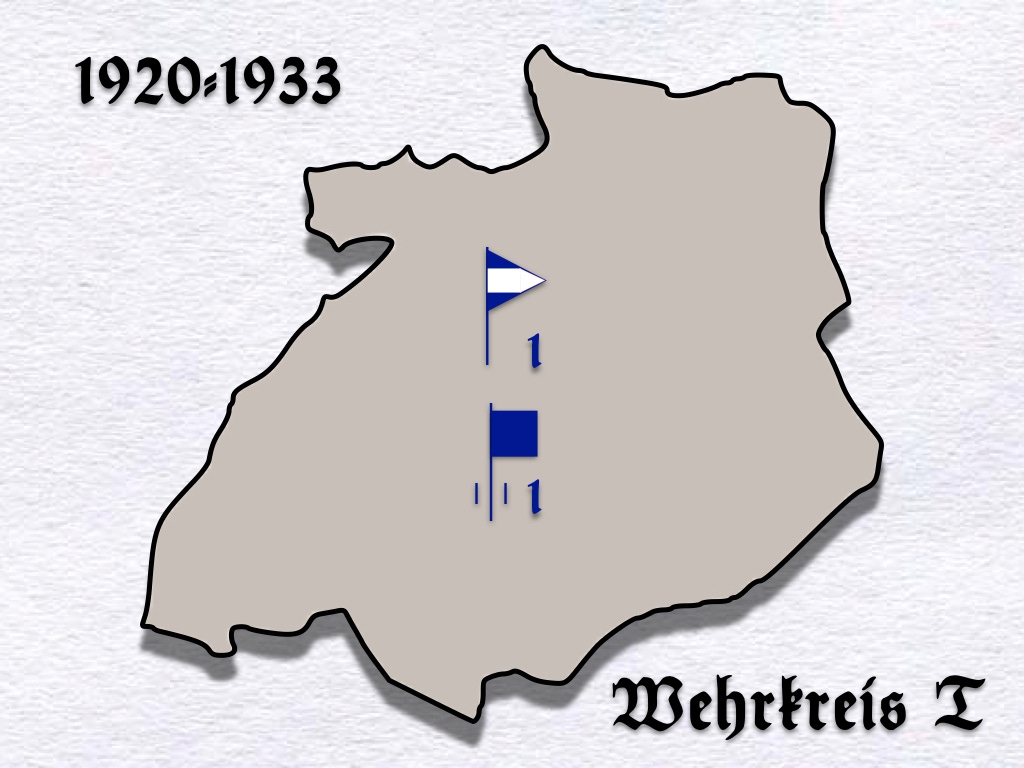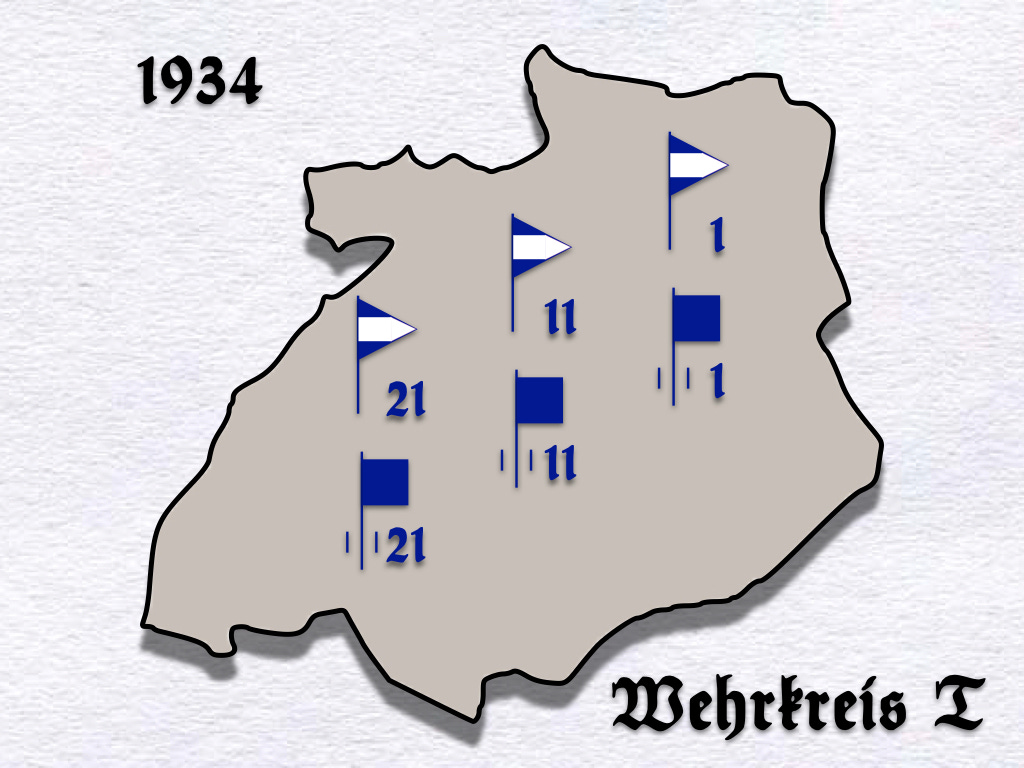Field Artillery of the Reichsheer
The Logic Behind the Numbers
Between 1920 and 1933, the system for allocating numbers to the seven field artillery regiments of the German Army was simple. Each artillery regiment bore the number of the infantry division to which it was assigned, which was also the number of the military region (Wehrkreis) in which both the division and its one artillery regiment were located.
The three cavalry divisions had no effect on the relationship among military regions and artillery regiments. The horse artillery battalions that were assigned to the cavalry divisions, at a rate of one battalion per division, were, for purposes of nomenclature, treated as extra battalions of nearby field artillery regiments. (A similar system was used in the pre-war armies of both France and Germany.)
In 1934, the Reichsheer expanded by a factor of three. Thus, each infantry division formed two clones of itself and, within each division, the one artillery regiment did the same. The systematic trebling of units and formations preserved the practice of giving field artillery regiments the same numbers as their parent infantry divisions. However, as there were seven military regions and twenty-one infantry divisions, the German Army needed a new way to show the relationship between infantry divisions and the Wehrkreise in which they were located.
The convention adopted to solve this problem added ten to the numbers of the first seven of the new divisions, and twenty to the numbers of the next seven such formations. Thus, the infantry divisions (and thus the artillery regiments) of Wehrkreis VII were received the numbers seven, seventeen, and twenty-seven.
This second scheme survived the creation, in 1935, of three new military regions (VIII, IX, and X) and the consequent formation of nine new infantry divisions, each of which possessed a single field artillery regiment. It could not, however, accommodate any further increase in the number of Wehrkreise. ( The creation of an eleventh military region would result in a situation in which two sets of infantry divisions and artillery regiments would have claims to the numbers eleven and twenty-one.)
A temporary solution was found in a proposal to organize any infantry divisions beyond the thirty already formed within existing military regions. Thus, for example, Wehrkreis II would form a fourth infantry division, which would be given the number thirty-two. (This number was the sum of the number of the military region and the number thirty.)
The “no new military regions” proposal soon fell afoul of the desire to organize the three infantry divisions of each Wehrkreis into an army corps capable of taking the field. So, in order to raise the six additional infantry divisions called for in the mobilization plan, the German authorities created two new military regions. In doing so, they sacrificed the neat numerical nomenclature born of the trebling of the Reichsheer on the altar of triangularization.
Source: Gliederung der Truppen des Heeres ab 15.10.1935, Russisch-deutsches Projekt zur Digitalisierung deutscher Dokumente.





The error in the second diagram has been fixed.